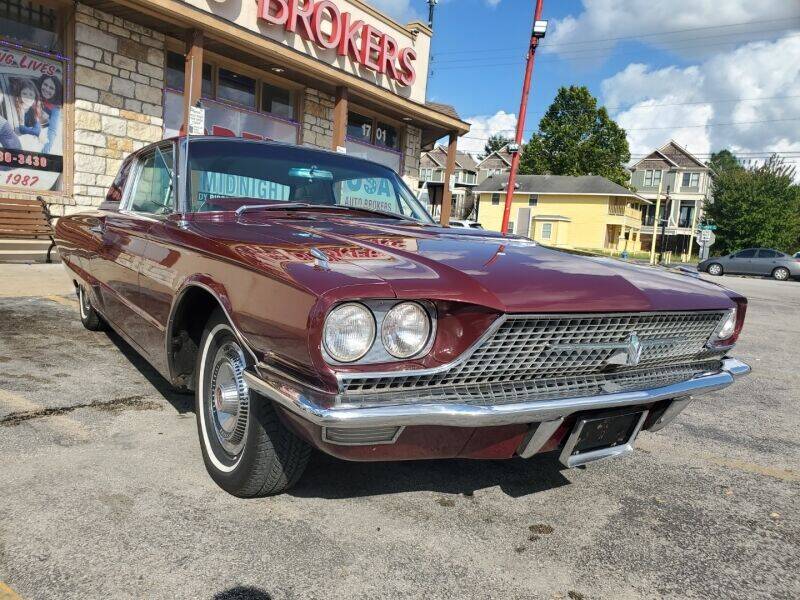
Californian classic car lovers are more interested in finding classic cars for sale beyond the L.A. region. The lack of classic cars in Southern California has disappointed many. You may want to consider classic car sales Northern California. Here are some suggestions to help you find the perfect vintage car. Here are some popular places to look for classic cars. You can also narrow your search by looking into nearby museums and car clubs.
Beverly Hills Car Club
The Beverly Hills Car Club offers classic cars for sale in California. The club is located just 30 minutes from Los Angeles and specializes in buying classic cars. They will pay top dollar for classic cars, and they will pick them up from anywhere in the U.S. Contact them to learn more about the selection.

Motor Transport Museum
Motor Transport Museum is a place where you can find classic cars in California. These cars and equipment have been subject to restoration and preservation to bring them to life. You will be able not only to admire these magnificent cars, but you'll also learn much about the history the Motor Transport Industry. These tips will help you choose the best classic car for you.
Murphy Auto Museum
If you are looking for a unique place to purchase classic cars, consider the Murphy Auto Museum. This museum houses classic automobiles ranging from the 19th century to the present, as well as various auto-themed special events. The collection is impressive and visitors will be impressed by their ability to personalize the automobiles they desire. Visitors will be fascinated by the history of each car and the chance to purchase one.
NHRA Motorsports Museum
You may be interested in purchasing a vintage hot rod or a classic car, but not sure where to start. The Wally Parks NHRA Motorsports Museum is located in Los Angeles County. It houses a large collection hot rod cars and memorabilia. Browse through its website and learn about the museum's history. Look through the website to find the California classic vehicle for sale.
Museum for Automobile Driving
The Automobile Driving Museum is a small but mighty collection of vintage cars. Visitors can explore the halls and take the controls of various classic cars. The collection is also toured by docents. It is open Tuesday to Sunday from 10 a.m. to 4 p.m. There is street parking available. The Automobile Driving Museum is wheelchair accessible, and suggests a donation of $15 per adult. Children under 10 get in free.

California Automobile Museum
California Automobile Museum is a museum that focuses on automobiles in Sacramento, California. They have over 150 vehicles on display in their seven-thousand-square-foot museum. The museum allows you to purchase a classic vehicle at a fraction the price of its full retail value. Collectors love these cars because of their unique history. California Automobile Museum classic cars are a part of Sacramento's history.
FAQ
How long does it take to become a good mechanic?
You need to have years of experience and practice before you can become a master mechanic. Working under the guidance of a professional mechanic is the best way to learn how repair cars.
You will have to spend time in a garage learning about cars and mechanics. Mechanical engineering books will be required to learn about mechanics and design.
Furthermore, you'll need to enroll in auto school.
It's important to start early. You don't have to wait until you are older to start studying automotive technology. You can get certified as a mechanic by getting started right away!
What qualifications do you need to be a mechanic?
You will need to pass several exams in order to become a mechanic. These include:
-
A test of general knowledge
-
A practical exam
-
An apprenticeship test
These tests are meant to help you grasp the fundamentals of mechanical engineering and physics, before you begin your journey as a mechanic.
After passing these tests, you will be eligible to become a mechanic. But, you will still need an apprenticeship. This will involve trade training.
To fully understand the mechanics of vehicle repairs, you'll need workshops and classes. Working alongside skilled mechanics is also a must.
To be a successful mechanic, you will need to have a high degree of concentration and attention. Repairs to vehicles require you to pay attention to every detail.
To become a good mechanic, you need patience and persistence. If you don’t love to follow instructions, this may not the right career path.
You could make a great career out of your love for cars and the work that goes into fixing them.
Is it worthwhile to become a mechanic?
This question is dependent on your life goals. If you are looking to make money, then yes. But if meaning and purpose is what you seek, then no.
It's not worth learning mechanics if you don’t have the skills. You'll waste your time. It won't make you wealthy. It won't make you famous. You won't be famous.
This would require you to spend many years learning how to properly do everything. Also, you would need to hire someone else to fix it if it broke down. Most people avoid doing this. They find something better.
To sum up, if you want to earn lots of money then go ahead. The mechanic's profession is not the right place for you if it means that you will live a fulfilled life.
What is the length of an apprenticeship as an automotive mechanic?
A three-year apprenticeship in automotive mechanics takes. The apprenticeship includes two years studying at school and two more as an apprentice. The first year of training is spent in the trade. This includes theory and practical skills as well as safety procedures. You will also learn to use tools efficiently and safely during this period. After the completion of the first year, you will spend another year on the job training. Here you'll gain valuable experience in different trades. These years will offer you the opportunity to attend formal classes.
The final year is dedicated to earning certifications and qualifications in the field. These include NVQs. They are awarded after passing exams on specific topics within the industry. The HNCs (Higher National Certificates), on the other hand, cover general subjects like customer service and management. City & Guilds certificates offer qualifications in certain trades.
What is the best way to learn about car mechanics
To be an auto mechanic, you don't have to know much about cars. You only need to know how to fix them. Most people begin by changing brake pads and tires, before moving on to more complicated repairs.
You'll need the ability to read and understand diagrams and to follow simple rules of good practise. Also, you will need to know how to tell if parts require replacing or repair.
It is important to understand that vehicle repairs should only be attempted by those who have received the proper training. This is especially true when you are dealing with costly components like engines and transmissions.
In fact, even though you won't need to know much about cars, you will need to thoroughly know the basics of mechanical engineering and physics. This includes understanding the mechanics of how engines and brakes work.
It is important to realize that you must be ready for all types of situations. One example is when you could be working on a vehicle involved in a serious crash. Also, you'll need to be familiar with dealing with accidents or breakdowns.
You must also be willing to learn quickly. As well as being able to diagnose problems, you'll need to be able to perform simple maintenance tasks such as tightening nuts and bolts.
How can I prepare for a apprenticeship as a mechanic?
It is important that you understand the ramifications of your actions. You must understand the workings of cars. You will be able to know exactly where to begin when you arrive at the garage for your first day.
Also, you need to know how fix simple problems, such as tires and lights that aren't working.
This will teach you how to diagnose problems and fix them yourself.
It is also important to know how the different pieces fit together in order to put them together again.
Finally, you should be able use tools safely.
These are all things that will make you a competent mechanic.
How long does an automotive course take?
An automotive course lasts 3 years.
The first year of your training is devoted to theory. You will learn all about cars. The second year will be spent in practical training. Here you will learn how fix engines, drive and other mechanic jobs. You will spend the final year working in a local garage to gain real-world experience.
Statistics
- According to the BLS, total auto technician employment is expected to exceed 705,000 by 2030. (uti.edu)
- There were 749,900 jobs available for automotive service technicians and mechanics in 2016, which is expected to grow by six percent through 2026. (jobhero.com)
- The U.S. Bureau of Labor Statistics (BLS) reports that the job outlook for automotive service technicians and mechanics is expected to decline by 4% from 2019 to 2029. (indeed.com)
External Links
How To
How to properly diagnose and repair your vehicle
To determine if your car needs repairs, you should first look at the symptoms that your car presents. Then, follow these steps to diagnose your vehicle properly.
-
Check engine lights. You should inspect the dashboard lights, such as the engine light indicator and the oil pressure gauge. Also, check the battery light indicator. If they have been flashing for more days than usual, it could be a sign that something is wrong with the vehicle.
-
Take a look at the treads. Tires can become worn and cause problems in handling and braking. Also, inspect the treads of your wheels. They should be clean and smooth. This can be done by removing the wheels from the vehicle and taking them off. You can check the tread wear with a flashlight.
-
Check the level of brake fluid. You should always keep track of the amount of brake fluid in your vehicle. This helps ensure that your brakes operate properly. Your brakes may fail if the brake fluid level drops.
-
Test the suspension system. The suspension system in vehicles absorbs vibrations and shocks. It provides better control and allows smoother acceleration and deceleration. You might notice a wobbly feeling or uncontrollable shaking in your vehicle if it has a problem with its suspension. If you are unsure if your vehicle is suffering from a suspension problem, put weight on the front and rear axles to check the movement.
-
Take a look at the steering column. The steering column connects the steering wheel to all other components of the vehicle. The steering column can often be damaged by an accident. You should replace the steering column if it is loose or weak.
-
Pay close attention to the exhaust tube. The exhaust pipe helps move gases from a combustion chamber into the atmosphere. Exhaust pipes that are cracked or leaking can allow harmful fumes to enter your cabin. It is also important to repair any bends in your tailpipe immediately.
-
Look under the hood. Take a look underneath the hood to find any strange or unusual items. Fluids could be leaking from your engine. In addition, if you notice an unusual smell coming from your engine compartment, you should contact a professional technician.
-
Make sure to check the air filter. The outside environment can collect dust and other debris in your vehicle's air filters. Dirty air filters can cause your vehicle to run poorly. Replace your air filter regularly.
-
Check the fan belt. The fan belt that connects your vehicle to the transmission is called the engine fan belt. If the fan belt fails, the engine won't start. Replacing the belt is simple. You will need a screwdriver, pliers and a pair of pliers.
-
Verify the radiator hoses. The radiator hose is used to carry water from the radiator to your engine. It can become cracked or damaged and leak hot liquid onto your engine. To repair the leaky hose, all you need is a pair if needle-nosepliers.
-
Be sure to inspect your windshield wipers. Windshield wipers use electricity to wipe away rain and snow. If they stop working they could leave streaks behind on your window glass. Simply change the washer oil to fix the problem.
-
Check the battery cables. The battery cables provide power for the electrical systems in your car. Before you change batteries, disconnect the positive cable. Failure to do so can damage your alternator.
-
Check the headlights. Headlights illuminate the road ahead of you. They can make it difficult to see if they stop working. Check the bulbs to see if they've burned out.
-
Pay attention to the lights. If you approach other drivers at night, lights will warn them. If one doesn't work, it could distract you and lead to an accident.
-
You should inspect your brakes. Brakes will reduce the speed of your car in case of an accident. If your brakes aren't working properly, you may lose control and crash into other cars.
-
Change your oil. Your engine will stay lubricated by the oil. It prevents metal parts from rusting too quickly. It is recommended to change the oil once a month.